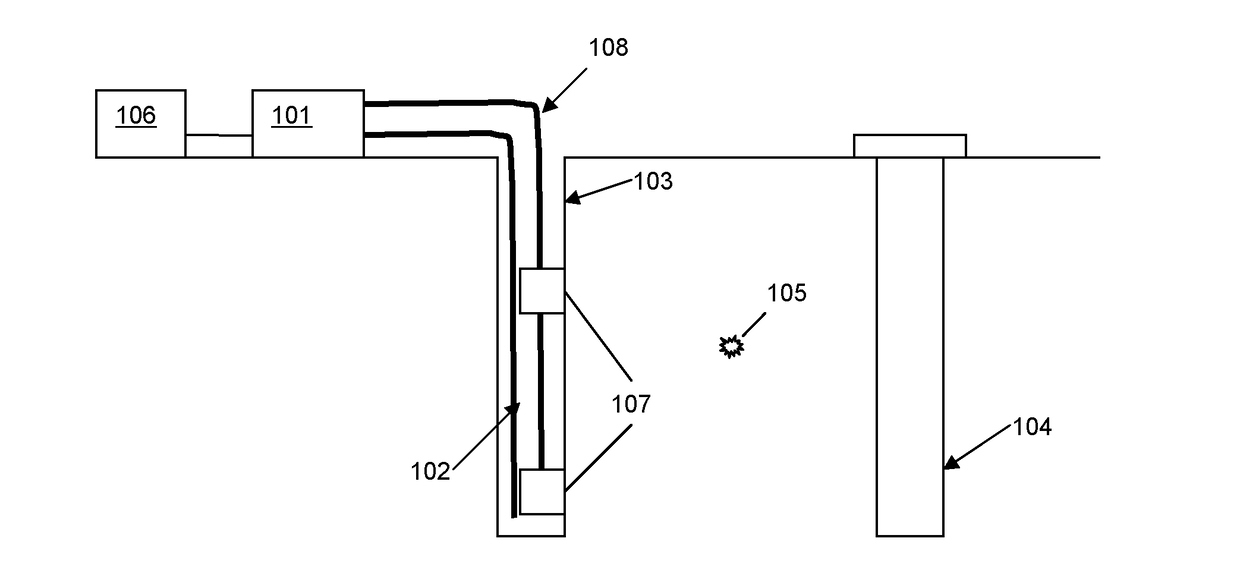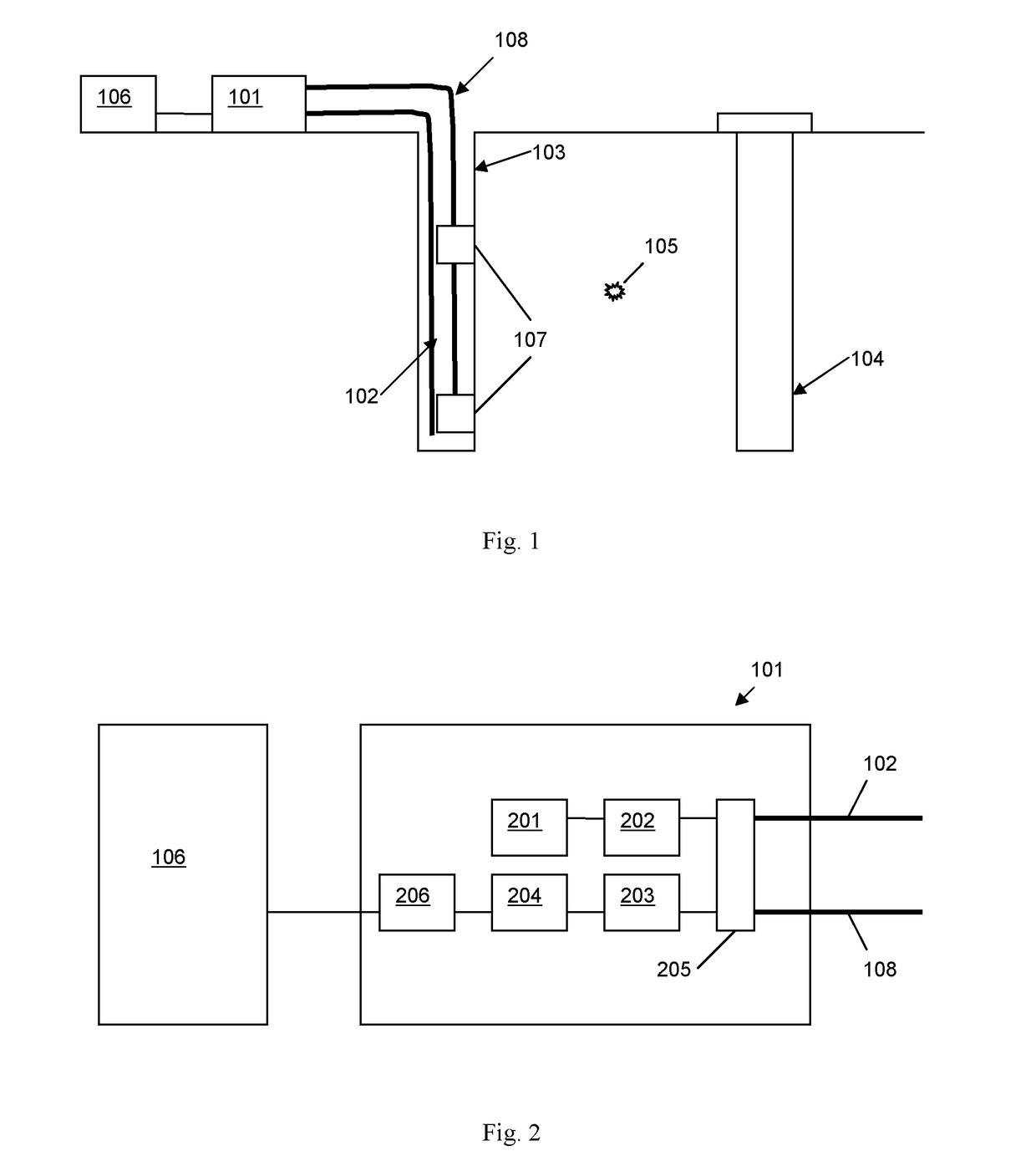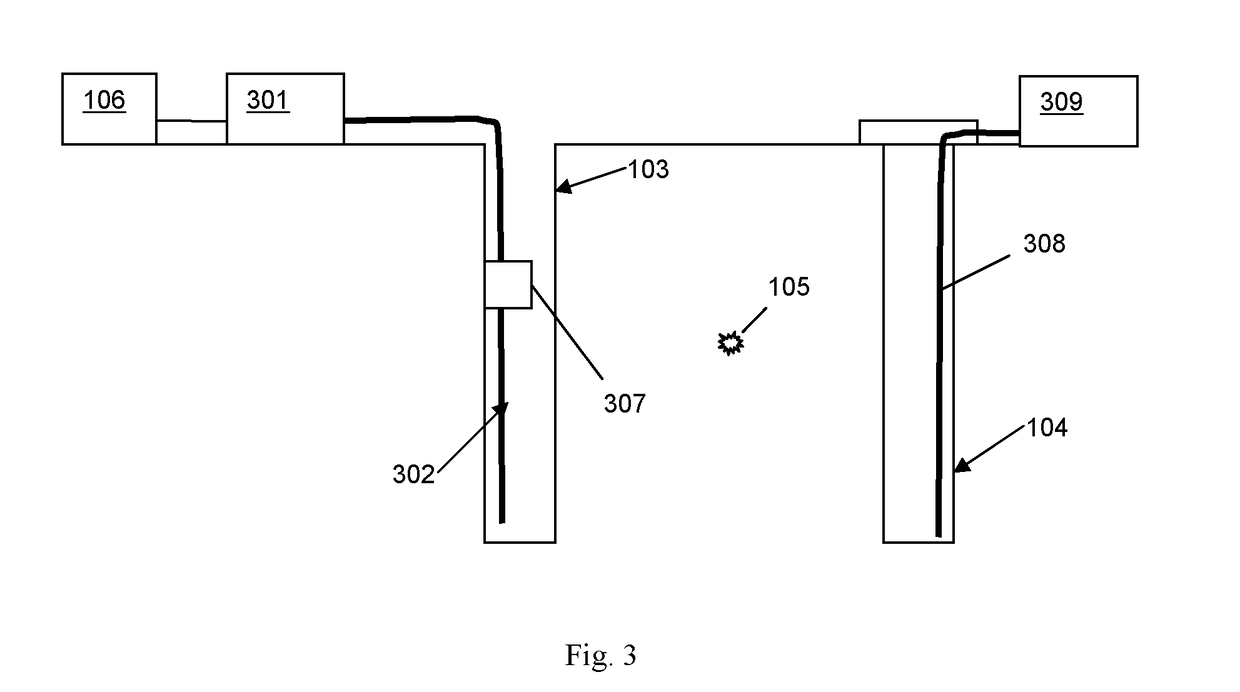Seismic monitoring
- Summary
- Abstract
- Description
- Claims
- Application Information
AI Technical Summary
Benefits of technology
Problems solved by technology
Method used
Image
Examples
Embodiment Construction
[0042]FIG. 1 illustrates a first embodiment of a seismic monitoring arrangement according to an embodiment of the present invention.
[0043]An interrogator unit 101 is removably connected to a first optical sensing fibre 102 to provide a distributed acoustic sensor. In this example the sensing fibre 102 is deployed to run the length of an observation wellbore 103 to provide long term monitoring of a reservoir in the vicinity of operational well 104, which may be a production well or an injection well. Other arrangements are possible however and the fibre could additionally or alternatively be at least partly buried near the surface of the area to be monitored. The sensing fibre 102 can be many kilometers in length and may, in this example, be at least as long as the depth of the observation wellbore which may be at least 1.5 km long. In this embodiment the sensing fibre may be a standard, unmodified single mode optic fibre such as is routinely used in telecommunications applications. ...
PUM
 Login to View More
Login to View More Abstract
Description
Claims
Application Information
 Login to View More
Login to View More - R&D
- Intellectual Property
- Life Sciences
- Materials
- Tech Scout
- Unparalleled Data Quality
- Higher Quality Content
- 60% Fewer Hallucinations
Browse by: Latest US Patents, China's latest patents, Technical Efficacy Thesaurus, Application Domain, Technology Topic, Popular Technical Reports.
© 2025 PatSnap. All rights reserved.Legal|Privacy policy|Modern Slavery Act Transparency Statement|Sitemap|About US| Contact US: help@patsnap.com



